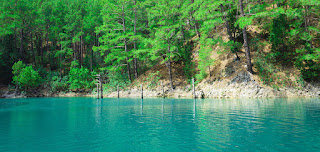The JPEG XL Image Coding System (ISO/IEC 18181) has a richer feature set than existing codecs and can deliver images with similar quality at a third of the size of widely used alternatives. It is designed with responsive web design in mind, so that content renders well on a wide range of devices. The JPEG XL coding tools include variable-size DCT, nonlinear Haar transforms, multiresolution encoding, adaptive quantization, adaptive loop filters and context modeling.
 JPEG XL includes several features that help transition from the legacy JPEG format. Existing JPEG files can be losslessly transcoded to JPEG XL, while significantly reducing their size. A lightweight lossless conversion process back to JPEG ensures compatibility with existing JPEG-only clients such as older generation phones and browsers. Thus it is easy to migrate to JPEG XL, because servers can store a single JPEG XL file to serve both JPEG and JPEG XL clients. JPEG XL decoders can perform enhancement that would improve image quality when dealing with the legacy JPEG format. JPEG XL encoders may also choose to add a small amount of additional information to further enhance the quality of decoded images, while remaining backward-compatible with existing legacy JPEG decoders.
JPEG XL includes several features that help transition from the legacy JPEG format. Existing JPEG files can be losslessly transcoded to JPEG XL, while significantly reducing their size. A lightweight lossless conversion process back to JPEG ensures compatibility with existing JPEG-only clients such as older generation phones and browsers. Thus it is easy to migrate to JPEG XL, because servers can store a single JPEG XL file to serve both JPEG and JPEG XL clients. JPEG XL decoders can perform enhancement that would improve image quality when dealing with the legacy JPEG format. JPEG XL encoders may also choose to add a small amount of additional information to further enhance the quality of decoded images, while remaining backward-compatible with existing legacy JPEG decoders.
JPEG XL is also designed to meet the needs of high-quality imaging and professional photography. A color-managed processing pipeline with full 32 bit per channel precision enables support for wide-color-gamut/high-dynamic-range images. JPEG XL reaches high compression efficiency at visually lossless quality (as defined in ISO/IEC 29170-2) using psychovisual modeling plugins.
JPEG XL is designed for efficient decoding even in software, with parallel and SIMD-friendly coding tools. JPEG XL compares favorably with contemporary coding solutions in terms of complexity.
JPEG XL further includes features such as animations, alpha channels, lossless and progressive coding to support a wide range of use cases including but not limited to photo galleries, e-commerce, social media, user interfaces and cloud storage. To enable novel applications, it also adds support for 360 degree images, image bursts, large panoramas/mosaics, and printing.
 JPEG XL includes several features that help transition from the legacy JPEG format. Existing JPEG files can be losslessly transcoded to JPEG XL, while significantly reducing their size. A lightweight lossless conversion process back to JPEG ensures compatibility with existing JPEG-only clients such as older generation phones and browsers. Thus it is easy to migrate to JPEG XL, because servers can store a single JPEG XL file to serve both JPEG and JPEG XL clients. JPEG XL decoders can perform enhancement that would improve image quality when dealing with the legacy JPEG format. JPEG XL encoders may also choose to add a small amount of additional information to further enhance the quality of decoded images, while remaining backward-compatible with existing legacy JPEG decoders.
JPEG XL includes several features that help transition from the legacy JPEG format. Existing JPEG files can be losslessly transcoded to JPEG XL, while significantly reducing their size. A lightweight lossless conversion process back to JPEG ensures compatibility with existing JPEG-only clients such as older generation phones and browsers. Thus it is easy to migrate to JPEG XL, because servers can store a single JPEG XL file to serve both JPEG and JPEG XL clients. JPEG XL decoders can perform enhancement that would improve image quality when dealing with the legacy JPEG format. JPEG XL encoders may also choose to add a small amount of additional information to further enhance the quality of decoded images, while remaining backward-compatible with existing legacy JPEG decoders.JPEG XL is also designed to meet the needs of high-quality imaging and professional photography. A color-managed processing pipeline with full 32 bit per channel precision enables support for wide-color-gamut/high-dynamic-range images. JPEG XL reaches high compression efficiency at visually lossless quality (as defined in ISO/IEC 29170-2) using psychovisual modeling plugins.
JPEG XL is designed for efficient decoding even in software, with parallel and SIMD-friendly coding tools. JPEG XL compares favorably with contemporary coding solutions in terms of complexity.
JPEG XL further includes features such as animations, alpha channels, lossless and progressive coding to support a wide range of use cases including but not limited to photo galleries, e-commerce, social media, user interfaces and cloud storage. To enable novel applications, it also adds support for 360 degree images, image bursts, large panoramas/mosaics, and printing.
by JPEG | Read more:
Image: uncredited
[ed. Oh... ok. ?]